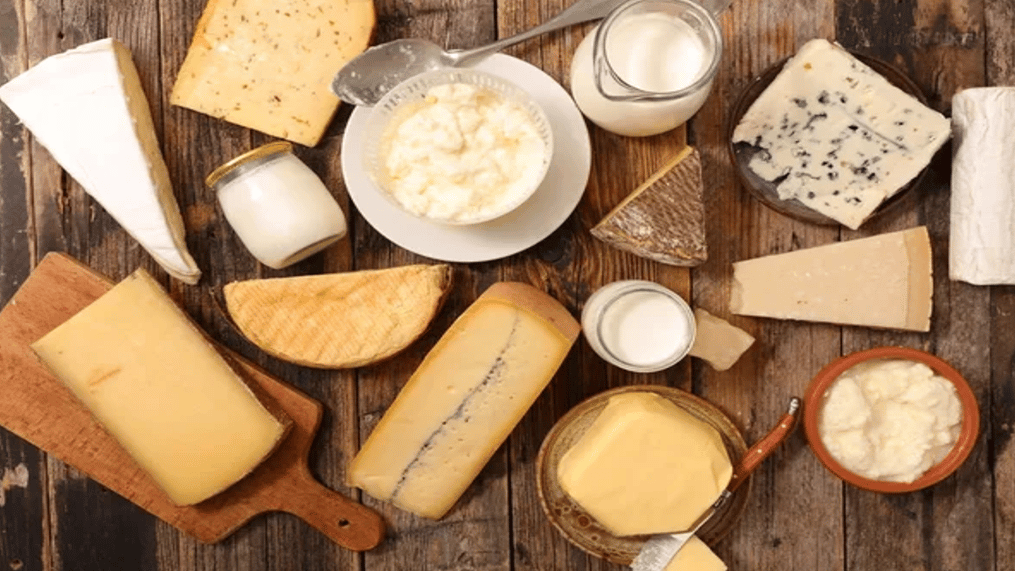- Button Mushrooms
- Dairy
- Pumpkins
- Sweet Potatoes
- Spinach
- Dates
- Bananas
- Guavas
- Chicken
- Seeds
Vitamin B5, or pantothenic acid, is important for your child’s health. Its main function is to help produce red blood cells and convert consumed carbohydrates, fats, and proteins into energy for the body to use. Like the other B vitamins, pantothenic acid is also water-soluble, and very little is stored by the body, as the rest is excreted through urine.
Therefore, parents need to incorporate vitamin B-5-rich fruits, vegetables, and more into their kid’s diets. Since pantothenic acid or vitamin B5 is usually available in many fruits, vegetables, eggs, whole grains, and more, you must incorporate them into your kid’s diet. Here is a quick guide on vitamin B5-rich fruits, veggies, and more for your kid’s meals.
Health Benefits of Vitamin B5

Before incorporating foods rich in pantothenic acid into your kid’s diet, here is a quick look at its health benefits for the human body. Vitamin B5,
- Improves skin health and lessens acne.
- Lowers bad cholesterol
- Helps in the absorption of other B vitamins like vitamin B2.
- Converts food into energy
- Aids in the formation of stress-related hormones.
- Helps in the formation of red blood cells
- Plays a crucial role in the synthesis of coenzyme A
- Maintains a healthy digestive system.
Recommended Dietary Allowances for Vitamin B5
Since vitamin B5 is abundantly available in fruits, vegetables, cereals, and other foods, its deficiency is uncommon in Western countries. To avoid suffering from pantothenic acid deficiency, follow these recommended dietary allowances for vitamin B5 in children.
- Kids aged 9 to 13 need 4 mg of vitamin B5 every day.
- Kids aged 14 to 18 require 5 mg of pantothenic acid per day.
Vitamin B5-Rich Foods For Your Kid’s Meals
1. Button Mushrooms
Mushrooms, specifically button mushrooms, are a great source of potassium, calcium, magnesium, selenium, and other minerals while providing your kids with rich levels of vitamin B5, along with vitamins A, B, D, E, and K. Since these nutritious and easily available mushrooms are earthy and full of umami (savory) deliciousness, you can add them to any dish, or simply serve sauteed on its own.
2. Dairy

Dairy products like milk, yogurt, and cheese are good sources of vitamin B5, pantothenic acid, phosphorus, potassium, and calcium. You can simply pour your kid a chilled glass of milk every day or make them a refreshing smoothie this summer
3. Pumpkins
Pumpkins are rich in vitamins A, B1, B2, B5, B6, B12, C, and K and are also a wonderhouse of minerals and antioxidants. Sweet and fleshy pumpkins are great in desserts, curries, or as air-fried chips or snacks.
4. Sweet Potatoes
Sweet potatoes are the go-to option for children who love potatoes, as they are more nutrient-dense and diabetic-friendly. Rich in vitamins B5 and B6, along with iron, calcium, and dietary fiber, sweet potatoes are an ideal addition to your kid’s daily diet.
5. Spinach

Very low in calories and high in nutrients, spinach is a great source of pantothenic acid for children. When seasoned well, spinach tastes great in any dish, be it a curry, soup, or simply sautéed on its own. But if your kid is a fussy eater, you can try feeding them smoothies made from fruits and spinach or making cold-cut sandwiches at home. Use their favorite fruits and sandwich fillings, while swapping the lettuce for spinach. They will not notice the difference, but their health will.
6. Dates
Dates are a powerhouse of potassium, fiber, and vitamins B5 and B6, among others. Delicious on their own and a natural sweetener in syrup form, dates are a low-calorie and tasty addition to your kid’s salads, trail mixes, and healthy snacks.
7. Bananas
The best friend of athletic and active kids, bananas not only replete your kid’s energy and electrolyte levels but also replenish their vitamin B5 levels, to ensure a constant, natural supply of energy to breeze through their busy days.
8. Guavas

A fantastic source of vitamin C, vitamin B5, and vitamin K, guavas are also chockful of protein, dietary fiber, magnesium, and calcium. This strength and energy-giving fruit is a great addition to your kid’s healthy diet.
9. Chicken
Chicken is also a decent source of pantothenic acid for kids. Try to steam or microwave your poultry meat instead of boiling it, to ensure the vitamin B5 nourishment is not lost. Since chicken is relatively low in calories and fat, while tasting mild, it is a great hit among kids.
10. Seeds
Seeds like lotus seeds, sunflower seeds, poppy seeds, sesame seeds, and pumpkin seeds, all of which are abundantly used by Indian mothers to nourish their kids, are wonderful sources of vitamin B5 or pantothenic acid.
Vitamin B5 deficiency occurs only when your child is malnourished or suffering from multiple nutrient deficiencies. This guide will aid you in incorporating the right kind of vitamin B5-rich fruits, vegetables, and more into your kid’s meals while delighting their tastebuds.
Kaushiki Gangully is a content writing specialist with a passion for children's nutrition, education, and well-being. With more than five years of writing experience and a science-based background, she provides nuanced insights to help families raise happy, healthy kids. Kaushiki believes in making learning and healthy eating fun, empowering parents with practical, easy advice.
The views expressed are that of the expert alone.
The information provided in this content is for informational purposes only and should not be considered a substitute for professional medical advice, diagnosis, or treatment. Always seek the advice of your physician or another qualified healthcare provider before making any significant changes to your diet, exercise, or medication routines.
References
https://www.nin.res.in/rdabook/brief_note.pdf
https://www.nin.res.in/downloads/DietaryGuidelinesforNINwebsite.pdf
https://www.nin.res.in/RDA_Full_Report_2024.html
https://www.ijfcm.org/html-article/18750
https://ods.od.nih.gov/factsheets/PantothenicAcid-Consumer/
https://www.webmd.com/vitamins/ai/ingredientmono-853/pantothenic-acid-vitamin-b5
https://www.fssai.gov.in/upload/advisories/2020/01/5e159e0a809bbLetter_RDA_08_01_2020.pdf
https://www.tataaig.com/knowledge-center/health-insurance/vitamin-b5-rich-foods
















